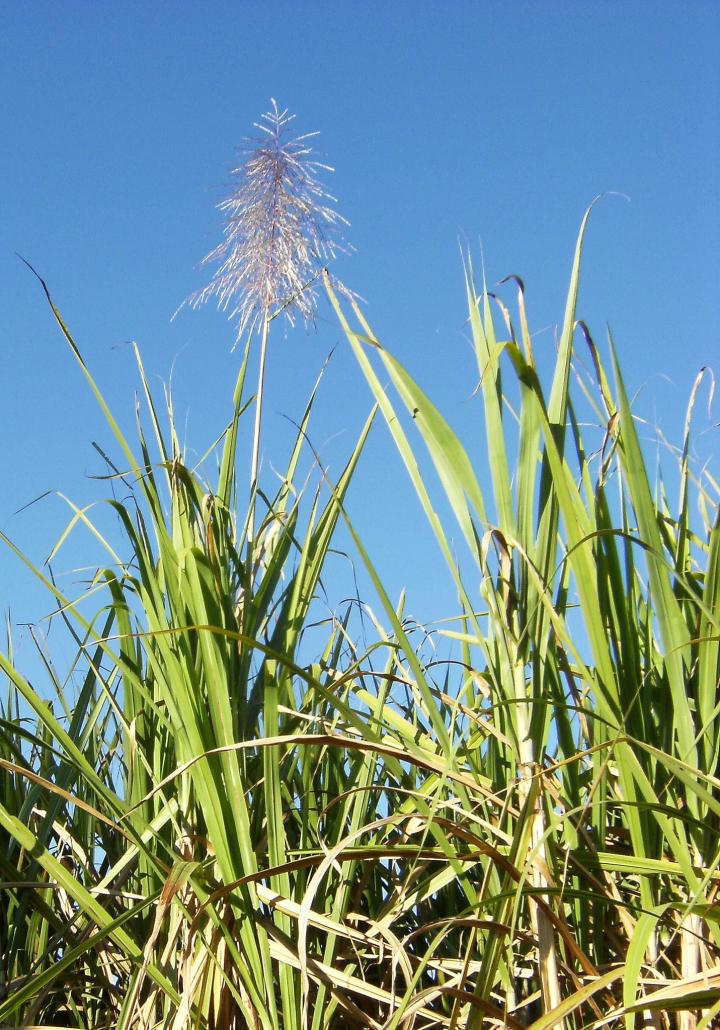
Credit: Theo Crazzolara, Flickr
Two potential biofuel crops in Hawaii–sugarcane and napiergrass–may sequester more carbon in soil than is lost to the atmosphere, according to a study published January 4, 2017 in the open-access journal PLOS ONE by Meghan Pawlowski from University of Hawaii Manoa, U.S., and colleagues.
From a climate change perspective, replacing fossil fuel with biofuel makes sense only if the latter has a smaller greenhouse gas footprint. Sugarcane and napiergrass are promising biofuel crops because, like other tropical C4 grasses, they have a large carbon-storing root biomass that could offset carbon-dioxide fluxes occurring during cultivation. To test this, Pawlowski and colleagues monitored conventional sugarcane and non-tilled napiergrass crops in Hawaii over two years, measuring the above- and below-ground biomass and assessing the greenhouse gas flux. In addition, these thirsty crops were grown with either conventional or deficit irrigation, which is half that of the current commercial practice.
The researchers found that by the end of the two-year study, both crops had successfully sequestered more carbon in the soil than was lost from the soil surface the largest component of the greenhouse gases in this case. For example, soil in the sugarcane plots had three times as much carbon as was lost to the atmosphere. Deficit irrigation boosted soil carbon sequestration but also reduced yield, though this tradeoff was less pronounced for napiergrass, which can be harvested more than once a year. The authors suggest that, with proper management, sugarcane and napiergrass biofuel feedstocks could therefore sequester carbon in soil. However, they caution that further study is necessary to determine whether this will continue over the long term and which crop may be best.
Co-author Dr Susan Crow notes: "A common misperception persists that biofuels are non-viable because of inefficiencies and net carbon losses that negate the potential for climate change mitigation. These results show that in the right system, coupled with the right crop and management, biofuels can be an important contributor to sustainable renewable energy portfolios.".
###
In your coverage please use this URL to provide access to the freely available article: http://journals.plos.org/plosone/article?id=10.1371/journal.pone.0168510
Funding: This work was supported by the Department of Energy http://science.energy.gov/programs/ [award number DE-FG36-08GO88037], the Office of Naval Research http://www.onr.navy.mil/en.aspx [grants N00014-12-1-0496 and N00014-16-1-2221], and the United States Department of Agriculture-Agricultural Research Service, http://www.ars.usda.gov/main/main.htm [award number 003232-00001]. This work was further supported by the USDA National Institute of Food and Agriculture, Hatch project https://nifa.usda.gov/program/capacity-grants (project HAW01130-H), managed by the College of Tropical Agriculture and Human Resources. The commercial affiliation, Hawaiian Commercial and Sugar (HC&S), provided support in the form of salary for author MN. Further resources were provided by HC&S in terms of 1) field site access within the commercial plantation to meet the identified objectives of the study and 2) cost-sharing to meet the 20% requirement of a federal funding source through use of space and infrastructure within the HC&S headquarters and processing facility for office, laboratory (sample processing), and storage needs for the project duration. As the representative for the direct stakeholder for the overarching project, MN provided input on the needs of HC&S operations moving forward from sugarcane cultivation to diversified farming (including alternative grasses for biofuel feedstock) and agreed to the final field location and fundamental experimental treatments, but did not have any additional role in the specific study design, data collection and analysis, decision to publish, or preparation of the manuscript. In her capacity as primary stakeholder, MN also assisted with funding acquisition by developing budgets to cover the costs of the HC&S field crew for plot installation and maintenance and field equipment repair or construction on site as needed. The specific role of this author is articulated in the 'author contributions' section. Otherwise, the funders had no role in study design, data collection and analysis, decision to publish, or preparation of the manuscript.
Competing Interests: We declare the commercial affiliation, Hawaiian Commercial and Sugar (HC&S), of co-author Mae Nakahata. This affiliation does not alter our adherence to PLOS ONE policies on sharing data and materials.
Citation: Pawlowski MN, Crow SE, Meki MN, Kiniry JR, Taylor AD, Ogoshi R, et al. (2017) Field-Based Estimates of Global Warming Potential in Bioenergy Systems of Hawaii: Crop Choice and Deficit Irrigation. PLoS ONE 12(1): e0168510. doi:10.1371/journal.pone.0168510
Media Contact
Susan Crow
[email protected]
############
Story Source: Materials provided by Scienmag





